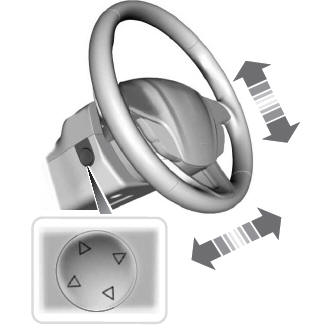Lincoln Corsair: Engine Ignition - 2.0L EcoBoost (177kW/240PS) – MI4/2.0L EcoBoost (184kW/250PS) – MI4 / Diagnosis and Testing - Engine Ignition
Diagnostic Trouble Code (DTC) Chart
Diagnostics in this manual assume a certain skill level and knowledge of Ford-specific diagnostic practices.
REFER to: Diagnostic Methods (100-00 General Information, Description and Operation).
| Module | DTC | Description | Action |
|---|---|---|---|
| PCM | P0300:00 | Random Misfire Detected: No Sub Type Information | GO to Pinpoint Test HD |
| PCM | P0301:00 | Cylinder 1 Misfire Detected: No Sub Type Information | GO to Pinpoint Test HD |
| PCM | P0302:00 | Cylinder 2 Misfire Detected: No Sub Type Information | GO to Pinpoint Test HD |
| PCM | P0303:00 | Cylinder 3 Misfire Detected: No Sub Type Information | GO to Pinpoint Test HD |
| PCM | P0304:00 | Cylinder 4 Misfire Detected: No Sub Type Information | GO to Pinpoint Test HD |
| PCM | P0313:00 | Misfire Detected With Low Fuel: No Sub Type Information | GO to Pinpoint Test HD |
| PCM | P0316:00 | Misfire Detected On Startup (First 1000 Revolutions): No Sub Type Information | GO to Pinpoint Test HD |
| PCM | P0325:00 | Knock/Combustion Vibration Sensor 'A' Circuit: No Sub Type Information | GO to Pinpoint Test DG |
| PCM | P0327:00 | Knock/Combustion Vibration Sensor 'A' Circuit Low: No Sub Type Information | GO to Pinpoint Test DG |
| PCM | P0328:00 | Knock/Combustion Vibration Sensor 'A' Circuit High: No Sub Type Information | GO to Pinpoint Test DG |
| PCM | P0330:00 | Knock/Combustion Vibration Sensor 'B' Circuit: No Sub Type Information | GO to Pinpoint Test DG |
| PCM | P0332:00 | Knock/Combustion Vibration Sensor 'B' Circuit Low: No Sub Type Information | GO to Pinpoint Test DG |
| PCM | P0333:00 | Knock/Combustion Vibration Sensor 'B' Circuit High: No Sub Type Information | GO to Pinpoint Test DG |
| PCM | P0351:00 | Ignition Coil 'A' Primary Control Circuit/Open: No Sub Type Information | GO to Pinpoint Test JF |
| PCM | P0352:00 | Ignition Coil 'B' Primary Control Circuit/Open: No Sub Type Information | GO to Pinpoint Test JF |
| PCM | P0353:00 | Ignition Coil 'C' Primary Control Circuit/Open: No Sub Type Information | GO to Pinpoint Test JF |
| PCM | P0354:00 | Ignition Coil 'D' Primary Control Circuit/Open: No Sub Type Information | GO to Pinpoint Test JF |
| PCM | P06D1:00 | Internal Control Module Ignition Coil Control Module Performance: No Sub Type Information | GO to Pinpoint Test JF |
| PCM | P130D:00 | Engine Knock/Combustion Performance - Forced Limited Power: No Sub Type Information | GO to Pinpoint Test DG |
| PCM | P2300:00 | Ignition Coil 'A' Primary Control Circuit Low: No Sub Type Information | GO to Pinpoint Test JF |
| PCM | P2301:00 | Ignition Coil 'A' Primary Control Circuit High: No Sub Type Information | GO to Pinpoint Test JF |
| PCM | P2303:00 | Ignition Coil 'B' Primary Control Circuit Low: No Sub Type Information | GO to Pinpoint Test JF |
| PCM | P2304:00 | Ignition Coil 'B' Primary Control Circuit High: No Sub Type Information | GO to Pinpoint Test JF |
| PCM | P2306:00 | Ignition Coil 'C' Primary Control Circuit Low: No Sub Type Information | GO to Pinpoint Test JF |
| PCM | P2307:00 | Ignition Coil 'C' Primary Control Circuit High: No Sub Type Information | GO to Pinpoint Test JF |
| PCM | P2309:00 | Ignition Coil 'D' Primary Control Circuit Low: No Sub Type Information | GO to Pinpoint Test JF |
| PCM | P2310:00 | Ignition Coil 'D' Primary Control Circuit High: No Sub Type Information | GO to Pinpoint Test JF |
Global Customer Symptom Code (GCSC) Chart
Diagnostics in this manual assume a certain skill level and knowledge of Ford-specific diagnostic practices.
REFER to: Diagnostic Methods (100-00 General Information, Description and Operation).
| Symptom | Action |
|---|---|
| Start/Run/Move > Starting > No Crank > Always | GO to Pinpoint Test JB |
| Start/Run/Move > Starting > Slow Crank/Battery > Always | GO to Pinpoint Test JB |
| Start/Run/Move > Starting > Hard Start/Long Crank > Always | GO to Pinpoint Test DG |
| Start/Run/Move > Starting > Hard Start/Long Crank > Always | GO to Pinpoint Test JB |
| Start/Run/Move > Starting > Hard Start/Long Crank > Always | GO to Pinpoint Test JF |
| Start/Run/Move > Starting > Auto-Start-Stop > Inoperative | GO to Pinpoint Test DG |
| Start/Run/Move > Starting > Auto-Start-Stop > Inoperative | GO to Pinpoint Test JB |
| Start/Run/Move > Running > Smoke From Exhaust > White | GO to Pinpoint Test JB |
| Driving Performance > Runs Rough > Acceleration > Always | GO to Pinpoint Test DG |
| Driving Performance > Runs Rough > Acceleration > Always | GO to Pinpoint Test HD |
| Driving Performance > Runs Rough > Acceleration > Always | GO to Pinpoint Test JB |
| Driving Performance > Runs Rough > Acceleration > Always | GO to Pinpoint Test JF |
| Driving Performance > Runs Rough > Cruise/ Steady Speed > Always | GO to Pinpoint Test HD |
| Driving Performance > Runs Rough > Cruise/ Steady Speed > Always | GO to Pinpoint Test JB |
| Driving Performance > Runs Rough > Deceleration > Always | GO to Pinpoint Test JB |
| Driving Performance > Idle Quality > Fast > Always | GO to Pinpoint Test JB |
| Driving Performance > Idle Quality > Rolling > Always | GO to Pinpoint Test JB |
| Driving Performance > Idle Quality > Slow Return > Always | GO to Pinpoint Test JB |
| Driving Performance > Idle Quality > Rough > Always | GO to Pinpoint Test JB |
| Driving Performance > Idle Quality > Rough > Always | GO to Pinpoint Test JF |
| Driving Performance > Idle Quality > Stationary Elevated Idle Control > Performance/Function | GO to Pinpoint Test JB |
| Driving Performance > Stalls/Quits > At Idle > Always | GO to Pinpoint Test JB |
| Driving Performance > Stalls/Quits > Acceleration > Always | GO to Pinpoint Test JB |
| Driving Performance > Stalls/Quits > Cruise/ Steady Speed > Always | GO to Pinpoint Test JB |
| Driving Performance > Backfires > At Idle > Always | GO to Pinpoint Test JB |
| Driving Performance > Backfires > Acceleration > Always | GO to Pinpoint Test JB |
| Driving Performance > Backfires > Cruise/ Steady Speed > Always | GO to Pinpoint Test JB |
| Driving Performance > Backfires > Deceleration > Always | GO to Pinpoint Test JB |
| Driving Performance > Lack/Loss of Power > Acceleration > Always | GO to Pinpoint Test DG |
| Driving Performance > Lack/Loss of Power > Acceleration > Always | GO to Pinpoint Test JB |
| Driving Performance > Lack/Loss of Power > Acceleration > Always | GO to Pinpoint Test JF |
| Driving Performance > Lack/Loss of Power > Cruise/ Steady Speed > Always | GO to Pinpoint Test JB |
| Driving Performance > Lack/Loss of Power > Cruise/ Steady Speed > Always | GO to Pinpoint Test JF |
| Driving Performance > Spark Knock > Acceleration > Always | GO to Pinpoint Test DG |
| Driving Performance > Spark Knock > Acceleration > Always | GO to Pinpoint Test JB |
| Driving Performance > Spark Knock > Cruise/ Steady Speed > Always | GO to Pinpoint Test JB |
| Driving Performance > Poor Fuel Economy > City Driving > Unloaded | GO to Pinpoint Test JB |
| Driving Performance > Poor Fuel Economy > City Driving > Unloaded | GO to Pinpoint Test JF |
| Driving Performance > Poor Fuel Economy > Highway Driving > Unloaded | GO to Pinpoint Test JB |
| Driving Performance > Poor Fuel Economy > Highway Driving > Unloaded | GO to Pinpoint Test JF |
| Driving Performance > Poor Fuel Economy > Combined > Unloaded | GO to Pinpoint Test JB |
| Driving Performance > Poor Fuel Economy > Combined > Unloaded | GO to Pinpoint Test JF |
| Driving Performance > Hesitates/Stumble > Acceleration > Always | GO to Pinpoint Test JB |
| Driving Performance > Hesitates/Stumble > Acceleration > Always | GO to Pinpoint Test JF |
| Driving Performance > Hesitates/Stumble > Cruise/ Steady Speed > Always | GO to Pinpoint Test JB |
| Driving Performance > Engine Surge > At Idle > Always | GO to Pinpoint Test JB |
| Driving Performance > Engine Surge > Acceleration > Always | GO to Pinpoint Test JB |
| Driving Performance > Engine Surge > Cruise/ Steady Speed > Always | GO to Pinpoint Test JB |
| Driving Performance > Engine Surge > Deceleration > Always | GO to Pinpoint Test JB |
Pinpoint Tests
 PINPOINT TEST DG: KNOCK SENSOR (KS)
PINPOINT TEST DG: KNOCK SENSOR (KS)
 Introduction Introduction
Normal Operation and Fault Conditions Refer to the DTC Fault Trigger Conditions. DTC Fault Trigger Conditions
Possible Sources
|
 PINPOINT TEST HD: MISFIRE DETECTION MONITOR
PINPOINT TEST HD: MISFIRE DETECTION MONITOR
 Introduction Introduction
NOTE: Mechanical noise caused by the front end accessory drive components, mechanically driven cooling fans, or rough roads at high RPM with light load conditions may produce a non-symmetrical loss of cylinder acceleration, which may result in a misfire. Normal Operation and Fault Conditions Refer to the DTC Fault Trigger Conditions. Clearing the PCM Diagnostic Trouble Codes (DTCs) erases any PCM recorded freeze frame data. Make sure to record any PCM freeze frame information before proceeding. DTC Fault Trigger Conditions
Possible Sources
|
 PINPOINT TEST JB: SECONDARY IGNITION COP
PINPOINT TEST JB: SECONDARY IGNITION COP
 Introduction Introduction
NOTICE: A damaged ignition system may cause high catalyst temperatures. Check the components next to the catalyst and muffler for heat damage. Normal Operation and Fault Conditions Refer to the DTC Fault Trigger Conditions. Possible Sources
|
 PINPOINT TEST JF: INTEGRATED IGNITION COIL ON PLUG COILS A THROUGH J FAILURE
PINPOINT TEST JF: INTEGRATED IGNITION COIL ON PLUG COILS A THROUGH J FAILURE
 Introduction Introduction
Normal Operation and Fault Conditions Refer to the DTC Fault Trigger Conditions. DTC Fault Trigger Conditions
Possible Sources
|
 Description and Operation - Engine Ignition - System Operation and Component Description
Description and Operation - Engine Ignition - System Operation and Component Description
System Operation
Cold Start Emission Reduction Monitor
The
cold start emission reduction monitor is an on board strategy designed
for vehicles that meet the low emissions vehicle-II (LEV-II) emissions
standards...
 Removal and Installation - Ignition Coil-On-Plug
Removal and Installation - Ignition Coil-On-Plug
Removal
Remove the Air Cleaner Outlet Pipe.
Refer to: Air Cleaner Outlet Pipe (303-12B Intake Air Distribution and
Filtering - 2.3L EcoBoost (199kW/270PS), Removal and Installation)...
Other information:
Lincoln Corsair 2020-2026 Service Manual: General Procedures - Engine Oil Draining and Filling
Special Tool(s) / General Equipment Oil Drain Equipment Draining With the vehicle in NEUTRAL, position it on a hoist. Refer to: Jacking and Lifting - Overview (100-02 Jacking and Lifting, Description and Operation). Remove the retainers and the underbody shield...
Lincoln Corsair 2020-2026 Service Manual: Description and Operation - Starting System - Overview
Starting System The starting system controls the cranking of the engine. The PCM energizes the starter relay when it receives inputs from the ignition switch, automatic transmission, and the BCM . When the starter relay is energized, it applies power to the starter motor which cranks the engine...
Categories
- Manuals Home
- 1st Generation Lincoln Corsair Owners Manual
- 1st Generation Lincoln Corsair Service Manual
- Head Up Display
- Programming the Garage Door Opener to Your Hand-Held Transmitter
- Interior Lamps
- New on site
- Most important about car
Adjusting the Steering Wheel - Vehicles With: Power Adjustable Steering Column
WARNING: Do not adjust the steering wheel when your vehicle is moving.
Note: Make sure that you are sitting in the correct position.


 PINPOINT TEST DG: KNOCK SENSOR (KS)
PINPOINT TEST DG: KNOCK SENSOR (KS)

 Introduction
Introduction